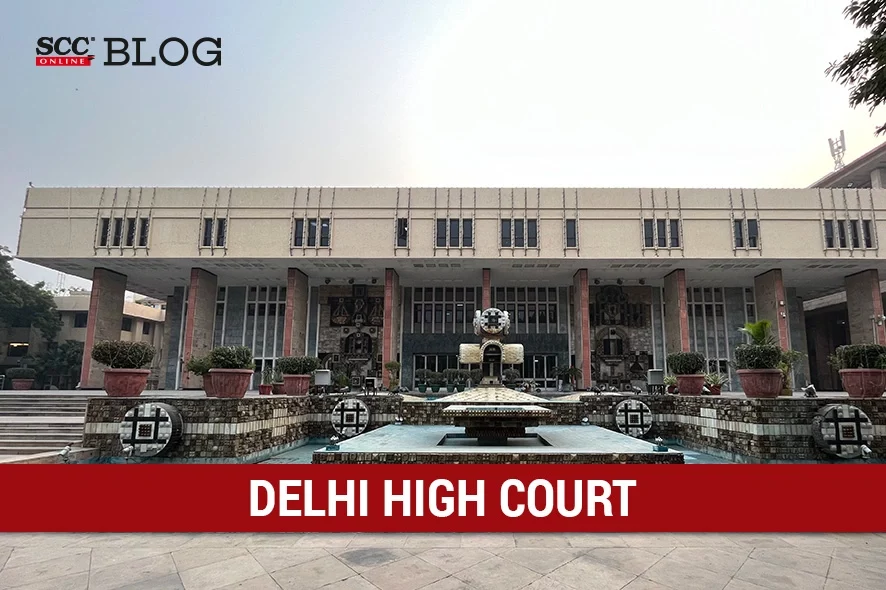Delhi High Court: In a case wherein Public Interest Litigation was filed, voicing the collective concerns of the residents of Siddhartha Extension, New Delhi, their Resident Welfare Association, and Senior Citizens Welfare Forum, regarding the route alignment of the Delhi-Meerut Regional Rapid Transport System (‘RRTS’), the Division Bench of Satish Chandra Sharma, C.J. and Sanjeev Narula, J.*, held that National Capital Region Transport Corporation (‘NCRTC’) had strategically planned allocation of resources to expedite the completion of the project as swiftly as possible. Further the Court held that these were not merely preventive measures, but a proactive strategy aimed at safeguarding the general public from construction-related hazards and these measures demonstrated NCRTC’s conscientious approach to balancing the imperatives of public infrastructure development with the everyday lives and concerns of affected residents.
Background
The petitioners grievance was against the decision-making process surrounding the route alignment of the RRTS, which was designed as a semi high-speed rail corridor, and the RRTS aimed to stablish connectivity between Delhi, Ghaziabad, and Meerut. The petitioners argued that the authorities’ decision to abandon the initial route plan, referred to as Option 1, in favour of an alternate route, Option 3, was arbitrary, lacked proper justification, and posed adverse consequences for the well-being and quality of life of the residents.
Analysis, Law, and Decision
The Court noted that the RRTS corridor had received government approval through a sanction order dated 07-03-2019, the priority section of this corridor was set to be operational by early 2023, while full commissioning was targeted for 2025. The Court opined that “the RRTS corridor was not merely a transport project, but also a significant initiative in environmental sustainability. Moreover, the RRTS was expected to contribute significantly to reducing pollution levels by augmenting the modal public transportation share, thereby decreasing the number of vehicles on the roads. Additionally, the efficient electric operation of the RRTS would further reduce both air and noise pollution”. The Court perused the following proposed potential alignment options for the concerned connecting line/viaduct:
-
bypassing Pocket C of Siddhartha Extension (Option 1); or
-
running through Pocket C of Siddhartha Extension, impacting 24 flats (Option 2); or
-
cutting through Siddharth Extension colony and affecting 8 flats (Option 3).
The Court observed that RRTS had undergone rigorous evaluation process by a team of domain experts and as per the evaluation, Option 3 not only minimizes the number of flats affected, but also presented a cost-effective approach when compared to Options 1 and 2. The Court also observed that the positioning of pillars in Option 3 had been carefully planned to ensure non-interference with roadways or other easement rights like parking and free spaces and it also minimized the impact on local residents by affecting the least number of flats and offered the most technically feasible and economically prudent route. Thus, the Court opined that NCRTC’s decision to forego Option 1 was anchored in valid technical and social considerations and the chosen alignment was not an arbitrary decision, but one steeped in technical viability, cost-efficiency, and broader societal gains.
The Court opined that “public interest stands at the forefront of this project, given its significant benefits such as reducing air pollution, alleviating traffic congestion, and offering a more efficient transportation system. Additionally, the project promises substantial environmental benefits, including significant reductions in annual emission rates of particulate matter, nitrogen oxide, hydrocarbons, and carbon monoxide”. The Court further opined that “NCTRC was not a novice in the field but was a specialized government entity with extensive experience in executing complex and heavy infrastructure projects. They had a robust safety mechanism in place to monitor, supervise, and direct construction activities, which added an additional layer of assurance that construction would be conducted in a manner that prioritizes both safety and environmental concerns. NCRTC had demonstrated a commitment to mitigating the impact of construction on the well-being of Siddhartha Extension residents; they had devised a comprehensive approach to construction that would ensure speed and safety”.
The Court noted that upon completion of the construction, NCRTC had committed to restoring the site to its original state, supplemented by modern amenities for the residents and this restoration would take place before the site was handed back to the respective governing agency. Thus, the Court held that NCRTC had strategically planned allocation of resources to expedite the completion of the project as swiftly as possible. Further the Court held that these were not merely preventive measures, but a proactive strategy aimed at safeguarding the general public from construction-related hazards and these measures demonstrated NCRTC’s conscientious approach to balancing the imperatives of public infrastructure development with the everyday lives and concerns of affected residents.
[Sidhartha Extension Pocket C Residents Welfare Association v. Union of India, 2023 SCC OnLine Del 5723, decided on 15-09-2023]
*Judgement authored by – Justice Sanjeev Narula
Advocates who appeared in this case :
For the Petitioner: Mr. Kirti Uppal, Senior Advocate; Mr. Nalin Tripathi, Mr. Nischal Tripathi, Advocates
For the Respondents: Mr. Piyush Beriwal, Ms. Anandita Aggarwal and Ms. Disha Chaudhary, Advocates. Mr. Siddharth R. Gupta, Advocates. Mr. Sanjay Katyal, SC, DDA with Mr. Nihal Singh, Advocates. Ms. Beenshaw N. Soni, SC, MCD with Ms. Mansi Jain and Ms. Ann Joseph, Advocates. Mr. Rajesh Katyal, Standing Counsel with Ms. Parina Katyal, Advocates







